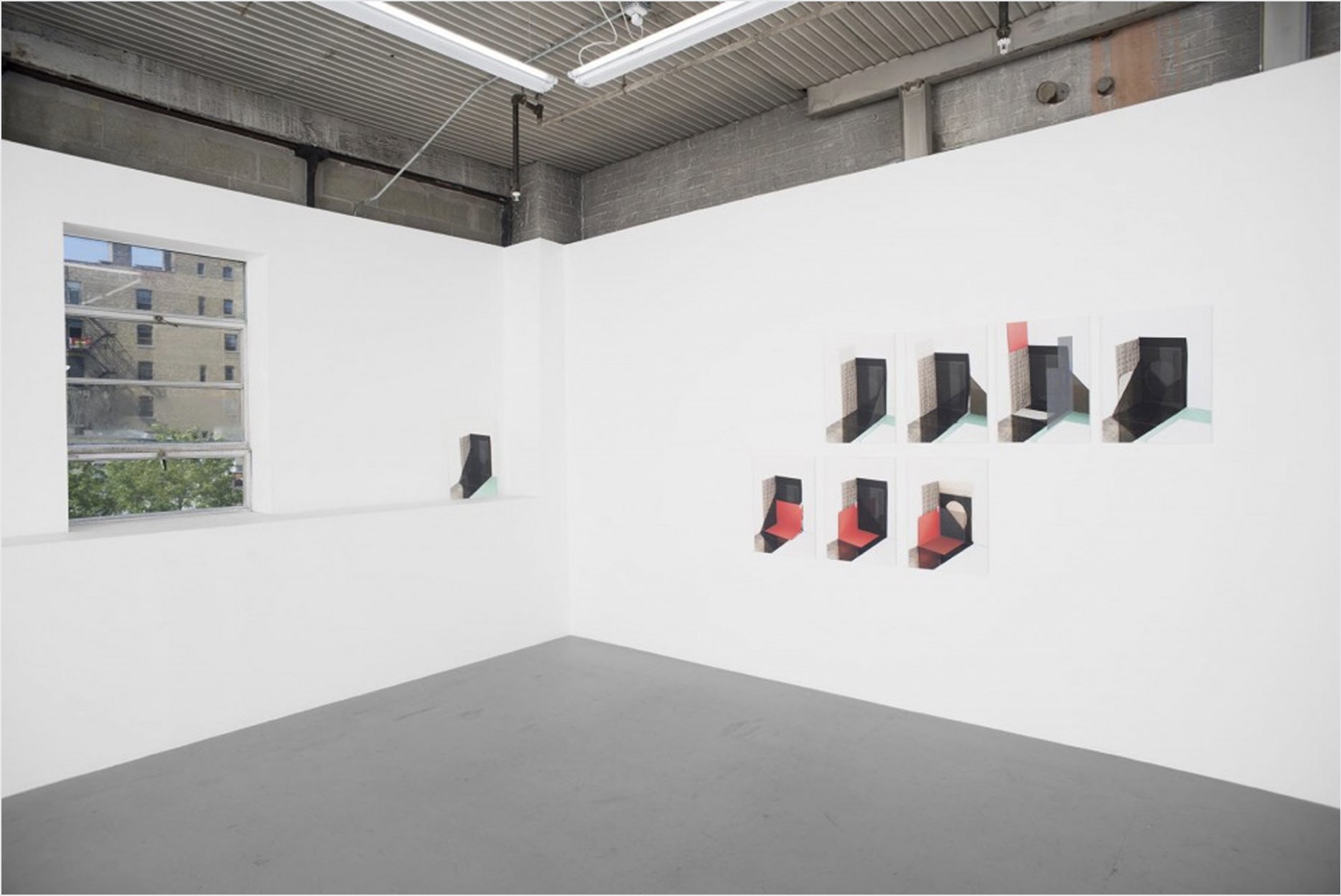On Phillip Maisel's Serengeti Green
exhibition essay
Document Space, Chicago, IL June 19–July 18, 2015
On left: Phillip Maisel, Serengeti Green (1840), 2015. Archival pigment print and neutral density filter, 24 x 17 inches. On right: Phillip Maisel, Serengeti Green (1854), 2015. Archival pigment print and neutral density filter, 24 x 17 inches. © Phillip Maisel, courtesy Document Space, Chicago.
Part of the allure of Phillip Maisel’s work is the challenge of deciphering exactly what you are looking at. He tips, stacks, slides and tucks everyday materials––paper, glass, mirror, tape, plexiglass––into intriguing, multi-layered scenes staged for the camera’s lens, blurring the boundaries between sculpture, photography and collage. Intuitively and meticulously constructed, these sculptural arrangements display a Bauhaus-inspired attention to balancing the elements of line, form and color. They are, however, fleeting constructions, items positioned precariously against walls only to be dismantled once photographed.
Maisel often subtly reorients the same cast of objects through a series of images, playing with the variable effects of color, form, surface, reflectivity, opacity and translucence on these mise en scène. As the same elements reappear in multiple works, they gain distinct visual traction with each altered formation. By photographing digitally, he can immediately review and evaluate each image, informing the way materials are shifted and repositioned for subsequent photographs, which are ultimately presented as groupings or sequences.
The photographs in Serengeti Green were produced in a single studio session during which Maisel worked with one set of materials, obsessively repositioning them within the photographic frame. Nuanced repetition and permutation forces an engaged looking that conflicts with the contemporary affliction of superficial scanning. Thus, the focus of Maisel’s work is the study of visual perception as much as the abstractions he photographs. As attention alternates between the subject imaged and an increasing awareness of our own ways of reading and understanding the work, we are asked to rethink our expectations of the photographic image and its function.
Like the typological studies of Hilla and Bernd Becher, the systematic nature of Maisel’s approach facilitates comparative study. He draws attention to the way objects’ form, color, texture and depth can morph through various iterations and how shifts in composition can either dramatically alter or go entirely unnoticed. “I am not doing anything particularly special to these materials themselves. It’s the context in which I’ve put them, and the act of photographing them that really transforms them,” he explains. When photographed, the basic materials of his assemblages metamorphose into visually seductive configurations. Representational in content and abstract in form, identifiable objects dissolve into intersecting shapes, textures and colors. It is the camera’s alchemical rendering of an alternate reality––not the three-dimensional sculpture itself––that primarily interests the artist.
Though the constituent elements of his constructions remain distinguishable, together they coalesce into strange, disorienting spaces, where dimensionality and flatness are constantly at odds. Like the constructivist artists László Moholy-Nagy, El Lissitzky and Aleksandr Rodchenko, Maisel uses ambiguous perspective, angular compositions and abstracted forms to both focus attention on the actual flatness of the picture plane and give the illusion of three-dimensionality. Through the use of layers, reflections and shadows within compositions––even collaging over or cutting into the image––he engages us to navigate the imagined spaces of his construction. The title, Serengeti Green, further alludes to a place that could feasibly exist, one that we can conjure in our minds; however, it in fact refers to the specific color of an object in the photographs. Maisel resolutely focuses our attention on the surface of the paper, advancing the notion of the photograph as a dimensional object, not simply a window into the world.
Viewers often bypass abstract images without considering much more than the work’s aesthetic merits. We may not be immediately touched, as with a portrait or landscape, by work that eschews a representational foothold and does not readily expose itself and its underlying logic. Maisel uses abstraction in his enigmatic photographs to coax the viewer to linger, to meander through his optical labyrinths. He thwarts the viewer’s penchant for immediate understanding. There are no straightforward answers to what the work is, why it was made and what it all means. As they open up and evolve with time––slowly divulging more about their materiality and the space rendered visible only by the camera’s lens––these works honor the highly personal nature of perception.





